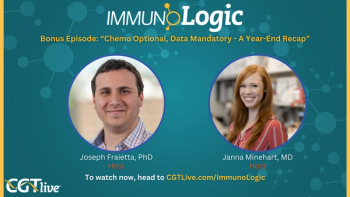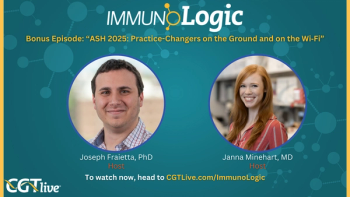
Safety Monitoring Critical as Cardiology Wades Into Gene Therapy for Hypertrophic Cardiomyopathy
Milind Desai, MD, MBA, the director of the Hypertrophic Cardiomyopathy Center and the vice chair of the Heart Vascular Thoracic Institute at the Cleveland Clinic, discussed the design of Tenaya Therapeutics’ clinical trial evaluating TN-201.
This is the second part of an interview with Milind Desai, MD, MBA. For the first part,
Tenaya Therapeutics’ investigational adeno-associated virus vector-based gene therapy, TN-201, is currently being evaluated for the treatment of MYBPC3 gene-associated hypertrophic cardiomyopathy (HCM) in the phase 1b
Following up on the news of
CGTLive: Can you give an overview of the MyPeak-1 clinical trial design?
Milind Desai, MD, MBA: This is a multicenter phase 1 trial, which means the fundamental objective of this is to understand safety and tolerability. I am also looking at an effective dose. We start with the lowest dose that we think is going to work and then dose-escalation studies will go on. We are looking specifically for patients positive for the MYBPC3 mutation with nonobstructive HCM, who are symptomatic, obviously. Also, at this point in time, since this is such a new technology—a new frontier, essentially—everybody that will be included will have an implantable cardioverter-defibrillator in place. Obviously beyond the first infusion, we will be monitoring them for safety, with appropriate immunosuppression, for the first few weeks.
An important aspect of this study is to make sure that the DNA expression occurs in the heart muscle. As a result, these patients will also have 2 endomyocardial biopsies: 1 at week 8, and 1 at week 52. The reason for that is for us to ensure that the genetic expression occurs in the heart. The only way to prove that is by looking at it under the microscope. That is what we are planning, and obviously we are having this conversation because the first patient was injected with the material, and we are [now] monitoring that patient.
Can you discuss the MyCLIMB natural history study (NCT05112237) and how it ties into the development plan for TN-201?
This is predominantly a pediatric study where they want to understand this genetic mutation in pediatric-aged patients and how it evolves. Ultimately, if you think about it, the greatest allure of something like this, say, a decade from now, after it has gone through appropriate safety and efficacy testing, would be to ask at what point in time it would be appropriate to deliver such a therapy? And who benefits from this therapy? Someone who is around 60 to 80 years of age, or somebody much younger who has a long life ahead? I think, before we go there, it is important to understand the natural history, because I don't believe we have robust, solid natural history studies [in this disease]. If the majority of the children with MYBPC3 mutations remain asymptomatic, or minimally symptomatic, and do not really develop advanced disease, then that's a different conversation versus 30% of patients—I'm just throwing out numbers—developing advanced heart failure by the time they reach 35 or 40 years of age. That's a different conversation. I think a natural history study like this in a targeted population like this would be very helpful for us to sort of gauge how we are going to use this technology going forward and could basically open up the floodgates for [gene therapy in] other mutations and other diseases. I think this is a brilliant move, as far as I'm concerned.
Following the recent news of the first patient in MyPeak-1 being dosed, are there any future plans or milestones for TN-201 that you are looking forward to?
This is a long-term safety and efficacy study. If you ask me personally, it is the safety piece of it [that is more important]. As I alluded to, we will be monitoring these patients for the long-haul, and they will have 2 endomyocardial biopsies at 8 weeks and at about 1 year, assessments of expression, in addition to a slew of blood work and functional capacity testing, quality of life measurements, etc. The plan is to recruit between 6 and 15 patients at various sites. This is clearly a team sport, where multiple sites are expected to participate across the USA. And time will tell. At this point in time, we are just, with bated breath, looking for how this is going to evolve. This is such a new frontier in cardiovascular medicine, especially in the HCM space, that we have to ride it out. The science is there. The process has been operationalized. Now we have to wait and see the downstream ramifications of it. Based on animal data, the expectation is that this technology works, but we still have to prove it in humans.
Is there anything else that you would like to share?
I sincerely thank the brave patients who believe in the science and are willing to participate. Also, I think this is a solid example of academic and industry collaboration for the greater good of these patients. My expectation is we will open up a whole new field of investigation for a wide variety of diseases. As has been said, the journey of 1,000 miles begins with 1 or 2 initial steps and I think that's where we are right now.
This transcript has been edited for clarity.
Newsletter
Stay at the forefront of cutting-edge science with CGT—your direct line to expert insights, breakthrough data, and real-time coverage of the latest advancements in cell and gene therapy.





































